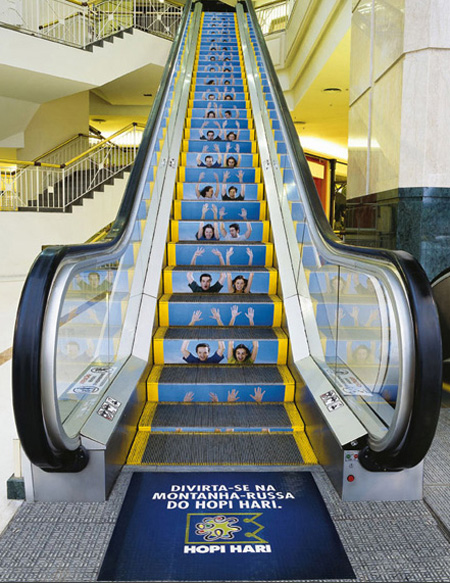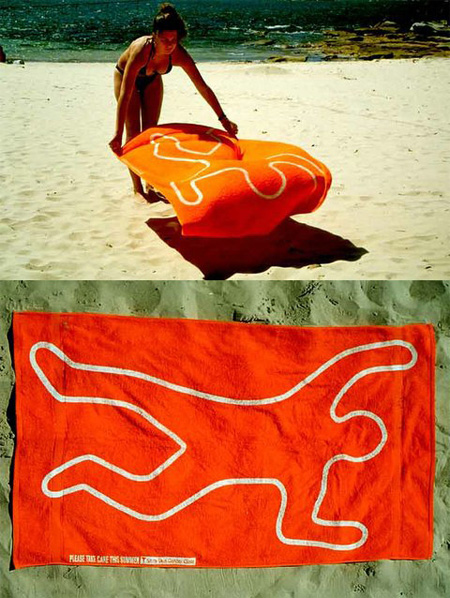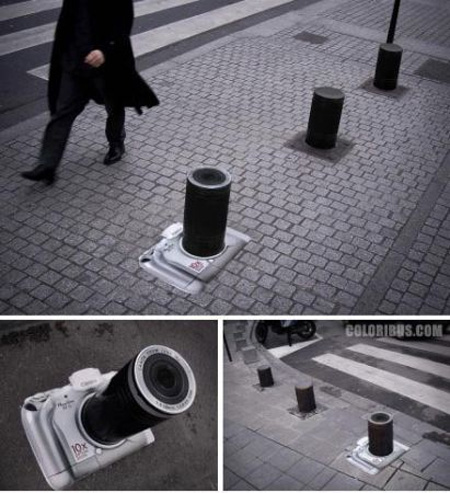Written by Nivair H. Gabriel

It’s happened to all of us. We read a novel that blows us away, and a few years later its title appears on posters underneath the face of Harrison Ford or Natalie Portman. But at some inevitable point in that darkened theater, the movie takes a turn we didn’t expect. Our eyebrows go up, our lips turn down, and the disappointment begins. Maybe the wrong director or writer can curse an otherwise excellent project – or maybe some things were just never meant to be filmed. Here are 10 books that we think should never have been committed to celluloid.

DUNE by Frank Herbert
There’s no doubt about it: Herbert’s Dune is a bona fide classic. It won the first ever Nebula award and the 1966 Hugo award, and most consider it to be the best-selling sci-fi novel in history. Set in a future where a feudal empire controls the planets of the unvierse, the novel tells the story of young nobleman Paul Atreides and his family’s rule of the desert planet Arrakis. Arrakis is the only source of “melange,” an addictive spice that lengthens lives and makes interstellar travel possible. Herbert’s book explores the power struggles that arise around the spice, and the complexity of human society that exists even in the far future.
Big shoes to fill for a film producer. Yet in 1984 David Lynch wrote and directed a movie version of Dune, rescuing it from development hell and plunging it into bad-adaptation hell. Reviews panned the movie – Roger Ebert deemed it “the worst movie of the year,” and others expressed similar disgust. Despite the movie’s 40-million-dollar budget, its effects were notably cheap, and the screenplay did not hold up to the challenge of translating a four-hundred-page book to screen. You’d think you couldn’t go wrong with Patrick Stewart, Sting, and Jürgen Prochnow, but evidently you very much can.
 FAHRENHEIT 451 by Ray Bradbury
FAHRENHEIT 451 by Ray Bradbury
Who could forget Fahrenheit 451, “the temperature at which book-paper catches fire, and burns …”? Bradbury’s classic 1953 novel takes place in a dystopian future where television has entirely replaced the printed word, and firemen burn books instead of saving lives. The author himself has stated that the point of the story was to showcase how owning a TV set can destroy all interest in literature – so making a movie version seems pretty damn ballsy to say the least.
With that in mind, the 1966 film, helmed by French icon François Truffaut, seems doomed from the start. It certainly didn’t help that there were many notable omissions, like the disappearance of the novel’s nuclear war (which is, let’s face it, a pretty big cut). Julie Christie plays the main character’s wife and his illicit lover, which adds an extra level of pointless weirdness. The bottom line is, there are plenty of books for which you can tell your friends to “just watch the movie.” But in the case of Fahrenheit 451, that probably makes you kind of fascist. Just sayin’.
 V FOR VENDETTA by Alan Moore and David Lloyd
V FOR VENDETTA by Alan Moore and David Lloyd
The book is probably one of the best graphic novels ever produced. Detailing the adventures of a masked anarchist and his sweet blond protégée, Moore’s writing also delves far deeply beyond his two main characters into complex themes of fascism, anarchy, identity, and the meaning of life itself. Nobody is without a story to tell: Even his villains are creepily sympathetic. By the end of the comic, every reader will have at least one Lloyd image burned in their brain, and be wondering – with no small amount of fear – exactly how much control their government does have.
Enter the movie. For the Wachowski brothers, the boys who gave us the two-thirds-sucky Matrix trilogy, setting this story to film was easy. They just had to cut out all of the character depth, change Moore’s nuanced portrayal of British fascism to the cookie-cutter Hollywood standby of Suited White Men, and (of course) turn the subtle, understated relationship of the main characters into romantic pining. But hey, at least they got the costume right.
 A WRINKLE IN TIME by Madeleine L’Engle
A WRINKLE IN TIME by Madeleine L’Engle
Though it’s often marketed as a young-adult fantasy novel, make no mistake: This book is without a doubt a sci-fi classic for all generations, an incredible tale that deftly blends science, speculation, and humanity. L’Engle’s 1962 story invented the concept of a “tesseract” – the fifth dimension, a phenomenon that folds the fabric of space and time. It introduced a mother who cooks dinner on a Bunsen burner, a father whose research leaves him imprisoned on another planet, and a brother and sister whose loving relationship turns out to be the most important thing in the universe.
Mostly we make an effort to ignore it, but it’s true: Many of the great sci-fi writers were (and are) better at dreaming up nifty science ideas than they were at weaving together a compelling story. L’Engle, however, belongs in no such group. Her work was never meant to be a crappy Disney movie, and yet in 2003, a crappy Disney made-for-TV adaptation appeared that one critic described as “lightweight, saccharine, rather slow going most of the way, and somewhat simplistic” as well as “sometimes clunky, and… often uninspiring”. Let us speak no more about it.

THE MINORITY REPORT by Philip K. Dick
Dick’s 1956 short story introduced the chilling concept of “precrime,” a police system whose officers arrest would-be murderers, rapists, and thieves before they get a chance to do their dirty deeds. His futuristic New York City is a world where three future-seeing mutants control who goes to prison and who doesn’t, and free will is a gray area – a luxury that not everyone possesses. One veteran cop, after seeing a prediction that he will kill someone he doesn’t even know, is having none of it.
So what did Steven Spielberg‘s 2002 movie add, besides a gross eye transplant? Well, for one, it brought in Tom Cruise – balding, out-of-shape 50-year-olds are never attractive narrators as far as Hollywood’s concerned, no matter what they might be able to share with us in real life. The setting’s different, too, and names have been changed, but at least it presents the idea with a lot more nifty special effects and a lot less storytelling, right? And that, my friends, is frighteningly endemic of the print-to-film adaptation.
 I, ROBOT by Isaac Asimov
I, ROBOT by Isaac Asimov
This is a revolutionary sci-fi classic, a collection of nine short stories exploring the limitations and dangers of human-created artificial intelligence. Asimov’s 1950 publication of I, Robot established the Three Laws of Robotics, supposedly unbreakable rules which govern the actions of these metal beings, and his short stories read like the best sci-fi mind puzzles you will ever find.
2004’s movie adaptation was undeniably well done, and it ended up being one of the best of the year – due in no small part to Jeff Vintar’s tight script and the total awesomeness of Will Smith and Chi McBride. Asimov certainly meant to get us thinking, so one could imagine he’d be pleased that his work inspired a smart sci-fi thriller like this. As it happens, however, the main plot of the movie is actually lifted from a 1939 short story by Eando Binder that bears the same name; Asimov’s publisher gave his collection the same title, against Asimov’s wishes. The Three Laws of Robotics were only added to the script after the film’s producers secured the rights to Asimov’s anthology. This project, then, has been plagued from the beginning by intellectual property snafus: It’s a confused collaboration of several minds, and it seems that not all the minds involved were properly credited. And since it’s caused most of the problems, can we let go of that title already?

WHEN WORLDS COLLIDE by Philip Gordon Wylie and Edwin Balmer
It’s a crusty old staple of hard sci-fi, a 1933 novel that first saw print as a magazine serial. Wylie and Balmer’s story begins with a South African astronomer, Sven Bronson, who discovers that a pair of rogue planets are headed for Earth’s orbit. Only a small group of scientists believe his claim; they work to build two ships that will carry the beginnings of a new human settlement to one of the rogue planets, which is projected to replace Earth in its orbit. This is the kind of pre-NASA speculation that works best in old-fashioned typewriter font on yellowed paper.
But of course, Hollywood felt the need to put it in Technicolor. The film adaptation did win an Oscar for special effects, but it was 1951, so you decide for yourself if that’s impressive. The movie’s story doesn’t so much explore sci-fi ideas as showcase human hysteria when tidal waves sweep the Earth and survivors are chosen by lottery – and it naturally also allows for the most groan-worthy of romance subplots. And I’d be remiss if I didn’t mention the way the film’s hero pushes his handicapped financier off the boarding ramp as the ship leaves, despite the fact that he funded the entire project. “Politically incorrect” doesn’t begin to cover it. Apparently there’s a remake of the film scheduled for a 2010 release – isn’t one mistake supposed to teach you a lesson?
 STARSHIP TROOPERS by Robert Heinlein
STARSHIP TROOPERS by Robert Heinlein
War sucks, and Heinlein proved it with his 1960 Hugo-award-winning novel. Told from the point of view of Johnnie Rico, a young soldier, this futuristic tale explores a world where only veterans can vote or hold public office – and where humankind battles endlessly with giant bugs. Rico’s flashbacks to his time at school, and his experiences in the military, serve to illustrate the total destruction that war causes.
In the book, the bugs barely ever appear; Rico views them only through a giant battle suit. For the 1997 film adaptation, though, that was not an option – after all, there ain’t a moviegoer born of woman who doesn’t want to see giant grasshoppers. Special effects left little screen time for Heinlein’s philosophy discussions, but director Paul Verhoeven admitted he never got past the first few chapters of the novel anyway. If he hated the story that much, what do you think was keeping him from writing and directing his own friggin’ screenplay?

THE POSTMAN by David Brin
Originally published as two novellas (both of which won Hugo awards), this post-apocalyptic story grapples with the concepts of survivalism, civilization, and hope. In a world destroyed not by disasters but by its own people, one man discovers a worn-out United States Postal Service uniform – and discovers that his fellow humans are so desperate they’ll even take hope from that. The complete novel, published as the two novellas combined, was named the best science fiction novel of the year in 1986 in the John W. Campbell awards.
And then Kevin Costner decided to direct and star in a film adaptation. The 1997 story, while still broadcasting a message of hope, centered that message more around the Postman as a war hero – and don’t forget his tagalong baby mama. The New York Times blasted the movie for its “bogus sentimentality” and “mawkish jingoism,” but Roger Ebert warned that we “shouldn’t blame them for trying.” Well, I think perhaps we should.
 THIS ISLAND EARTH by Raymond F. Jones
THIS ISLAND EARTH by Raymond F. Jones
The year 1952, I’m sure, saw many new creations in sci-fi, but I’m willing to bet that almost none of them were as silly as the interociter – an alien transmission device, which despite its apparent sophistication is about as big as a truck. Jones gave us the interociter in his novel This Island Earth, which told of an alien race that recruited Earth’s greatest thinkers for a group called the “Peace Engineers.” Not surprisingly, the “Peace Engineers” were actually helping the aliens wage an intergalactic war. On a planet that had already seen the genius of 1951’s The Day the Earth Stood Still, this should not have seemed a good candidate for a film adaptation.
Since the movie version of This Island Earth now gets most of its viewings in the form of Mystery Science Theater 3000’s lampoon, the folly of bringing it to film is assured. Plastic skulldomes, toilet thrones, and raspberry bushes are not the stuff of eternal movie classics. Before you adapt a book, my advice is to run it through a quick Mike-Joel-Crow-Tom Servo test. You might be surprised how much money you save on camera equipment and actors.

























 We’ve put together a list of 30+ must-have Firefox 3 extensions that we know you’ll enjoy, whether you’ve upgraded to
We’ve put together a list of 30+ must-have Firefox 3 extensions that we know you’ll enjoy, whether you’ve upgraded to 



 Of all the ware Microsoft churns out from its sweatshop of
Of all the ware Microsoft churns out from its sweatshop of 













 Birds do it, bees do it (we think), even
Birds do it, bees do it (we think), even